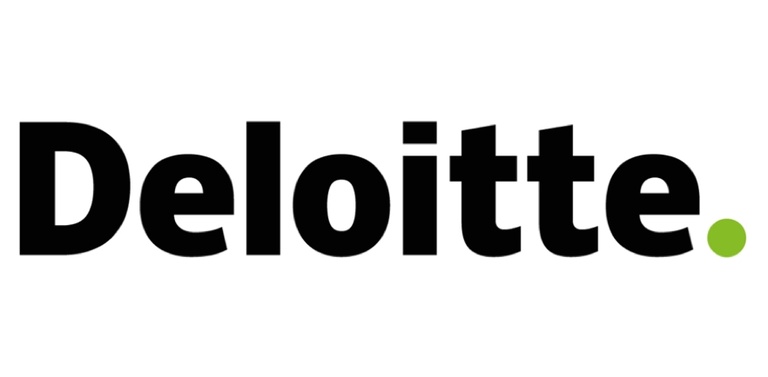Topic of the month June 2019: The Proposed Sustainability Taxonomy: First Insights and Applications in the EBAV II-Sphere
The Proposed Sustainability Taxonomy: First Insights and Applications in the EBAV II-Sphere
by Aykut Bußian, Deloitte and Thomas Krick, Deloitte
Baseline
The regulation of institutions for occupational retirement provision (IORP II) has come into effect a few months ago, as a first measure towards the new Sustainable Investing Framework promoted by the EU Commission. The directive introduces a duty to inform on investors, particularly on pension funds, to disclose how environmental, climate, social and corporate (ESG) governance aspects are taken into account in their investment policy. Institutions (in the following for simplicity: IORPs) are furthermore required to invest according to the prudent person principles, to improve their internal risk management functions and to make more data and information available to their members regarding ESG or stewardship aspects.
To assist the journey towards an environmentally sustainable finance industry, on the 18th June the Technical Expert Group has released the first version of its sustainability taxonomy, which will be developed gradually in the years to come. It mainly consists of both an evaluation and classification tool to help investors and companies make informed investment decisions on environmentally responsible economic activities. This article focuses primarily on the taxonomy’s and the regulations’ consequences for IORPs. However, the taxonomy will also serve as a benchmark regulation for the whole finance industry.
Main Pillars of the Taxonomy and EBAV II-Regulation
The German implementation of the IORP II-Directive, the “EbAV II-Umsetzungsgesetz”, transfers some reporting and governance requirements of the Solvency II-legislation into the IORP environment, whilst quantitative aspects are left out. As part of the new governance requirements, IORPs have to adapt their processes and their organizational structure to an effective corporate governance system regarding:
• Implementation of independent key functions in risk management, actuary, compliance and internal audit
• Carrying out an own risk assessment (ORA) based on a risk management policy on a periodical basis
• Establishment of written policies, especially for risk management, internal audit, the actuarial function and remuneration
• Information obligation towards regulatory authority regarding outsourcing of functions
• Appointment of a depository for the IORPs assets
IORPs will not be obliged to monitor or integrate ESG-criteria in their investment process; however, they have to report to their stakeholders whether they observe ESG criteria in general. Taking into account the significant public visibility of major pension funds, we expect standard market practice to go well beyond the minimum IORP II requirements. Numerous pension funds use asset manager services, therefore it can be expected that the latter will be monitored regarding their ESG-policies compliance with the prudent persons principle of IORP II.
But, given that it is a major factor in the ESG framework, what actually qualifies as environmentally sustainable? The taxonomy identifies activities that already are low carbon activities and thus contribute to a transition to a zero net emissions economy, as well as supporting activities (“enablers”). Furthermore, the taxonomy has identified business sectors, which host those activities (agriculture, manufacturing, transport etc.). For each of those sectors, the taxonomy provides a list of main activities together with a “do no significant harm” assessment, to ensure that the taxonomy does not include economic activities undermining any of the environmental objectives. Under the proposed taxonomy regulation, IORPs as institutional investors as well as asset managers as their service partners are guided when marketing investment products as environmentally sustainable. IORPs could state that they are seeking to invest in Taxonomy-eligible activities or disclose their own preferred approach to determine that their investment is environmentally sustainable. For this purpose, the taxonomy provides a list of economic activities and relevant criteria as well as a flexible approach; adaptable to different investment styles and strategies. The overall principle for an activity to be included in the taxonomy is its substantial contribution to at least one environmental objective (e.g. climate change mitigation/ adaption, transition to circular economy etc.) without harming any other environmental objective.
Benefits and Challenges for IORPs arising from the Taxonomy
This new regulatory direction strains an industry, which currently suffers costs pressure and increased spending on IT, and which is challenged by a need for specialists for alternative investments. Regarding the increasing criticism of several local industry associations regarding the overregulation in the ESG sphere, the proposed taxonomy provides a flexible framework for identifying and developing environmentally sustainable activities. IORPs now have a clear reference framework for expressing expectations regarding environmental considerations to their asset managers’ investment decisions. Asset managers themselves can use the taxonomy to develop sustainable investment opportunities and channel financial resources into them. Additionally, IORPs in their intermediary position as asset owners (f.e. own-used buildings) and investors can measure or communicate the ESG performance using the taxonomy. However, just like the application of ESG criteria by IORPs is voluntary (in a broad sense), the use of the taxonomy is also not mandatory. That being said, the use of any alternative methodologies is possible, but must be explained.
As IORPs are focusing on high-duration alternative investments, the taxonomy can be highly useful when assessing the sustainability of private market investments like private equity, direct loans or infrastructure projects. Herefore, the taxonomy guides the investors with a sequential process to identify the relevant environmentally sustainable activities of the target investment. This in turn will change the respective due diligence process, requiring revenue breakdowns for taxonomy-eligible activities, performance measurement against technical screening criteria and management data on social issues (f.e. labour rights policies, internal governance).
Given the consultation period for the taxonomy, which can last until the end of the year, the industry associations (BVI, BVAI, ZIA, etc) are now asked to express their point of view. The German Fund Association (BVI), for instance, generally welcomed these changes and advocated an EU Ecolabel for financial products within the EU, which can now be developed using the taxonomy. Generally, a stronger integration of ESG factors into financial market activities is undisputed in Germany, but the manner of such integration has not yet been clarified, especially regarding its character as a new “investment baseline” or a value proposition.
Potential and risk
As explained, it is widely assumed that ESG factors will be incorporated into investment decisions of IORPs in the future. Therefore, it cannot be ruled out that the next steps of the EU Commission will be to make integration mandatory, which would create a level playing field between IORPs and insurance companies. Now that the first steps towards a categorization of environmentally sustainable activities has been taken, it is also possible that IORPS will be obliged to include a certain percentage of sustainable financial products in their portfolios. Regulatory incentives such as reduced capital burdens for Solvency II-companies will not be granted because capital adequacy requirements do not apply to IORPs. It is, however, expected that the ongoing discussion of creating alternative incentives for IORPS and asset managers will gain momentum.
Deloitte, yourSRI and EbAV-II
Implementation of the IORP regulatory requirements in the proposed taxonomy setup requires an extensive set of skills, ranging from pension/ insurance and investment core activities to data generation and processing capabilities. Therefore, Deloitte has partnered with companies providing the required skill sets to deliver a comprehensive service to its clients. yourSRI as a dedicated reporting and data solutions provider focused on ESG features the necessary cutting edge services to complement the organizational and processing insights of Deloitte. For our clients in the pension, insurance and other financial industries, we jointly provide an integrated service comprising of governance, procedural design, internal regulations, data delivery and processing as well as marketing and product design topics arising from the ESG regulation.
|
|
About Deloitte Deloitte provides audit, risk advisory, tax, financial advisory and consulting services to public and private clients spanning multiple industries; legal advisory services in Germany are provided by Deloitte Legal. With a globally connected network of member firms in more than 150 countries, Deloitte brings world-class capabilities and high-quality service to clients, delivering the insights they need to address theirmost complex business challenges. Deloitte’s approximately286,000 professionals are committed to making an impact that matters. |





